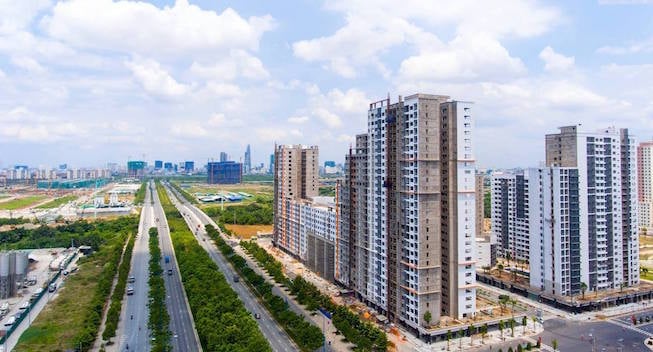Cutting red tape in APA approvals to speed up tax negotiations
The change in APA approval authority is expected to shorten processing time and enhance business proactiveness in international tax negotiations.




Given the lack of supply and the increasing rents in the existing central business districts (CBD), JLL anticipates that large companies will start to consider Thu Thiem as a viable alternative for hiring their head offices.

Since 2015, the office performance of Ho Chi Minh City (HCMC) has exceeded the expected demand with an impressive net absorption across all segments of commercial office buildings. 2017 witnessed four new large-scale Grade A and Grade B buildings entering the market, three of which recorded an occupancy rate of over 70% upon opening.
According to JLL report, the average occupancy rate of Grade A and Grade B office buildings in HCMC is more than 94%, which showed an extremely high demand for both old and new buildings in the submarkets of both grades.
The short-term limited supply and subsequent rising rental rates are believed to drive further investment into the office segment of HCMC and Vietnam. The challenge now is, where to invest?
Land scarcity is the most significant challenge for investors, according to Trang Bui, Head of Markets in Vietnam of JLL. Subsequently, we have seen the tables turned, and the landlords in HCMC are currently raising rents. CBD rents reached a record height from 2006 to 2017.
Accordingly, the average Grade A rent is currently US$38.9/sqm/month, while the Grade B rent is US$22.3 /sqm/month and continuously rose year-on-year. In particular, the rent of the newly-built ones is US$10/sqm/month higher than one of the buildings built before 2010.
The emerging segments such as e-commerce are propelling the office demand to new heights not seen in Vietnam before. Such segments as co-working, logistics, sourcing, and manufacturing have also been a driving force in HCMC's office market. This trend is expected to continue through 2018 to 2019.
Thu Thiem new urban area is earmarked as the future CBD of HCMC. The 657-hectare site, facing the existing CBD, will comprise 176 land parcels with approximately 3.2 million sqm (GFA) of residential space and 3.4 million sqm (GFA) of commercial space, which will eventually accommodate 145,000 residents and 217,000 officers. Thu Thiem will be home to numerous major head offices and serviced apartments.
Similar to Kowloon (Hong Kong), Pudong (China) and Bonifacio Global City (Philippines), early adopters and large spaces users migrating across the river may benefit from the first mover advantage regarding opportunities, a favorable location, and visibility. The initial hesitation will eventually be overcome by longer-term benefits such as competitive rents, low-density open areas, infrastructure and easier connectivity to HCMC's growth corridor.
* The author is Greg Ohan, Director of Solutions Development in Vietnam at JLL.
The change in APA approval authority is expected to shorten processing time and enhance business proactiveness in international tax negotiations.
As hybrid cloud systems grow more complex, Vietnamese enterprises are struggling to detect cybersecurity threats moving laterally within their own networks.
The submission of the draft resolution on Vietnam’s international financial center to the National Assembly heralds a new developmental era for the country.
More than just running a 5-star resort, Kristian Petersen is redefining the art of hospitality with a humane and sustainable leadership philosophy.
For Tyna Huynh, co-founder of Drinkizz, organic is not just a food choice but a way of life that fosters a deep connection between people, nature and community.
Embracing respectful workplaces could very well be the key to unlocking a more prosperous future for Vietnam's garment industry.